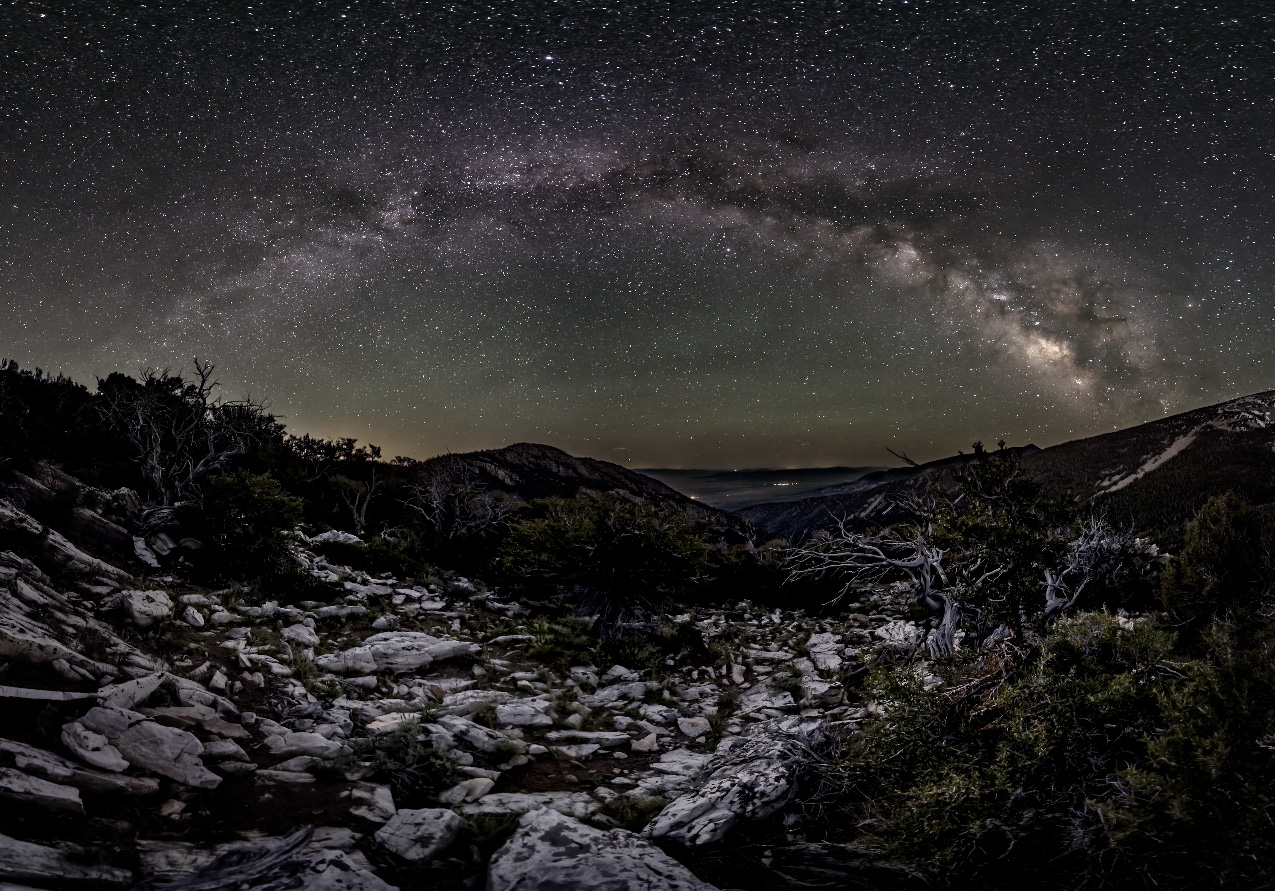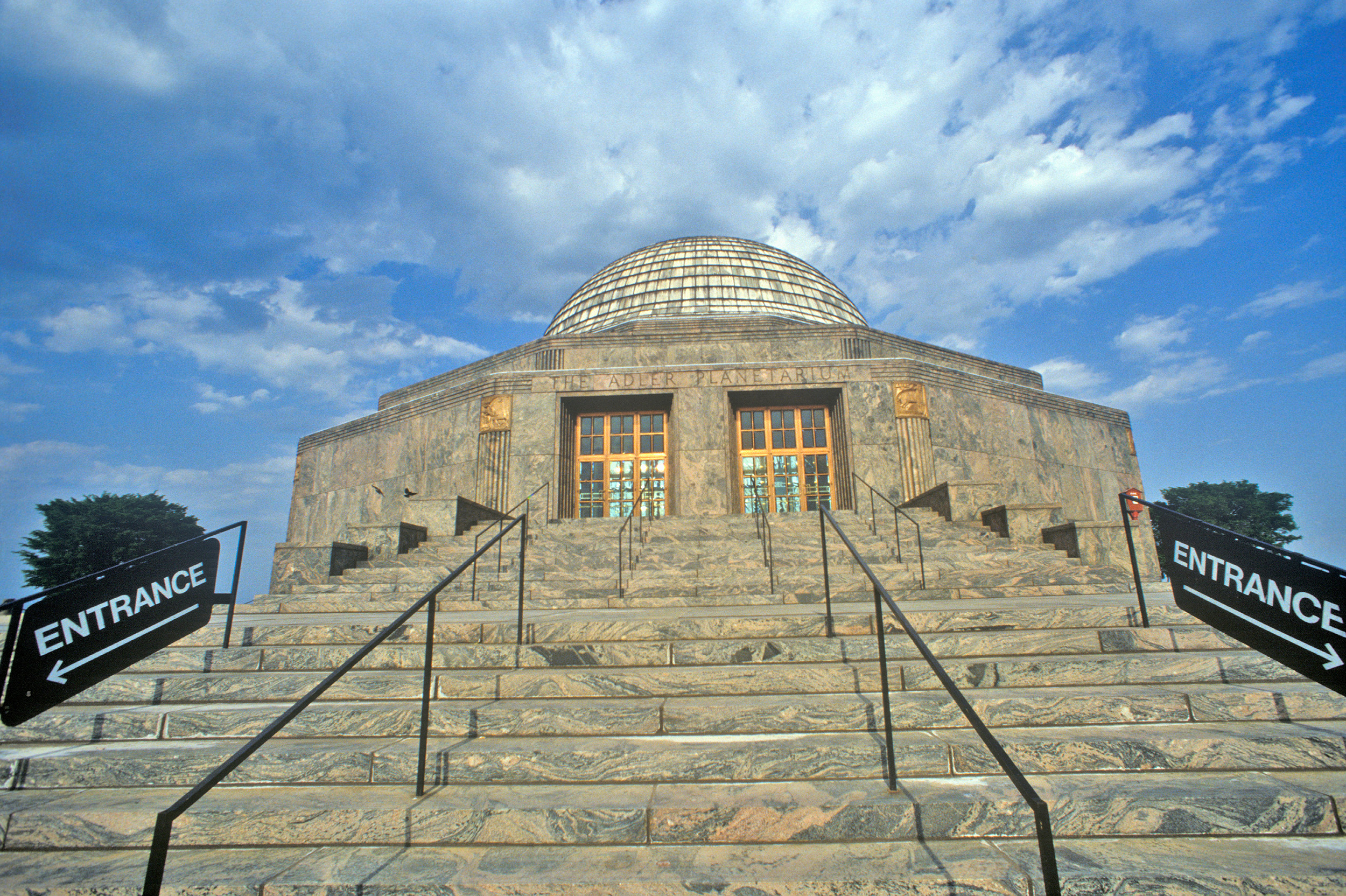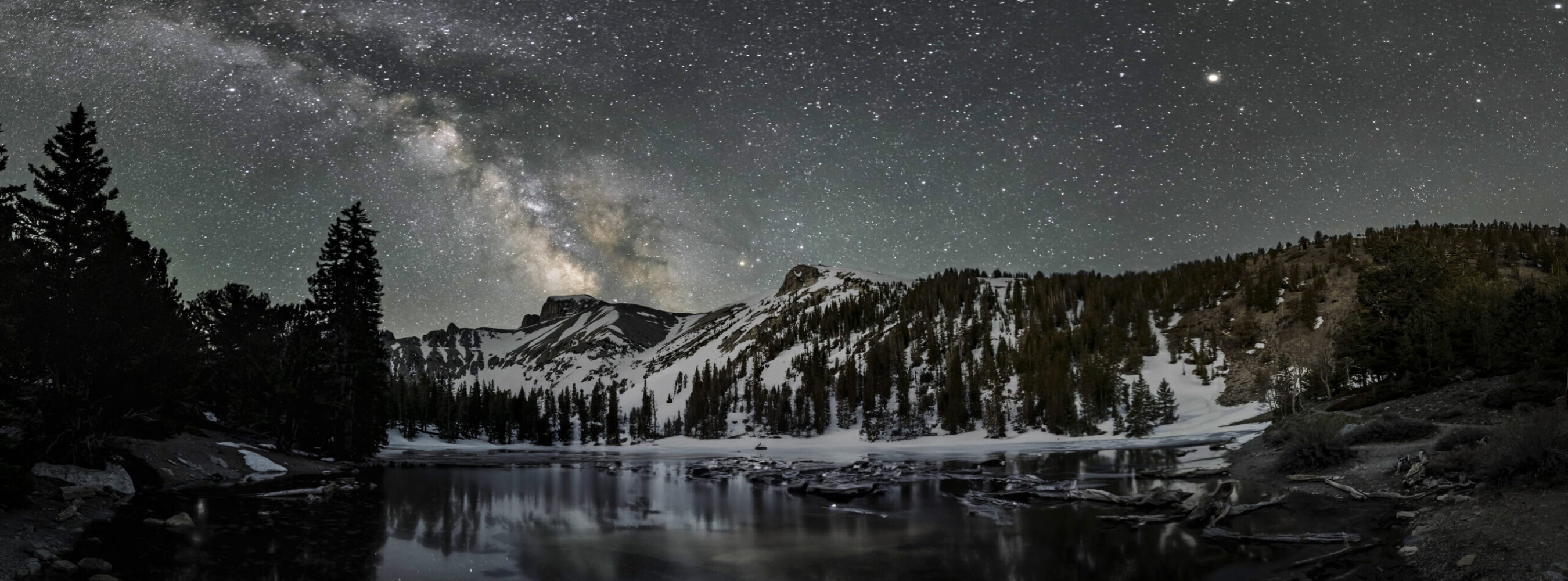Space Out Nevada - A 360 VR Experience
Space Out Nevada is an immersive experience that transports you through the incredible landscapes of the Silver State, from slot canyons at Cathedral Gorge State Park to the Great Basin National Park. At night in these stunning locations you can see the Milky Way with the naked eye.

Working with experiential agency NRG, Fahlgren Mortine and Noble Studios, Visualise captured some of the highlights of this huge and stunning state, capturing the journey and the destinations in glorious immersive 360 degree video. The focus of the film was the nighttime vistas you can see in Nevada – a state with famously low levels of light pollution (despite Las Vegas!!).

The final experience was launched in central Chicago and took people out of their busy urban lives, transporting them to rural Nevada. People could go inside a Travel Nevada bell tent and put on a ‘Meta Quest 3’ VR headset. Once all the guests were seated and ready the experience could be triggered in synchronisation from the Visualise ‘Conductor’ App.
Impact
The project was launched in Chicago at the Adler Planetarium, with views of the night sky time-lapses especially exported for the unique, iconic, domed screen.

After the initial launch the project traveled to Pioneer Court in central Chicago for it’s full VR launch. In a rugged bell tent, contrasted by the glass and concrete modernity of the city skyline all around. Travel Nevada virtually transported people to a totally different world.
Ten Meta Quest 3 headsets were synchronised with one master computer to trigger them all at once using the Visualise ‘Conductor’ VR App. There were tears, gasps of amazement and joy. People were surprised and blown away by all that Nevada could offer, away from the blinding lights of Las Vegas and into the dead quiet of a star studded night in the Great Basin.
Over the 2 days the event was live, over 500 people took the trip, leaving a memorable and enchanting imprint of Nevada.
The Content
When our explorers put on the headset we wanted them to be completely immersed in the beauty and serenity of the environments. We used advanced noise canceling Bluetooth headphones and gave people stools that would allow them to freely swivel to explore the scenes.

Each part of the film broadly follows the ark of a journey through the state – traveling in the day, setting camp, exploring, seeing the stars and then repeating the next day. There is so much to see and do in Nevada that the film could have been hours long but we think this is a perfect taster for the possibilities in the Silver State.
The Cameras
For this shoot we wanted the flexibility to capture some shots quickly and dynamically, we also wanted some of the vistas to be shown in the best possible visual fidelity, quality and control, finally we wanted sensors that would allow us to capture frames at up to 30s in length to capture all of the glorious night light from the stars. This meant we needed to bring 3 different cameras on the project.
Meta Three
The Meta Three is an incredibly high resolution 360 video camera that is often used for shooting backplates for virtual production studios and shoots. As it captures content at 12.5k resolution it has the most stunning fidelity and really helps you feel transported/connected to the scenes.

We used the Meta to capture all of the static positions, some day/evening time-lapse and some of the aerial – drone based views too. The above shot shows the Meta Three on location near the Logandale Trails.
Shooting scenes on the Meta Three allows us to capture footage at 12.5k. Although this is higher than the native resolution that the Meta Quest 3 can play back it’s exported at 8k and looks stunning in the headsets. It’s also future-proofed if Travel Nevada ever want to use some of the footage in large scale projection domes or in virtual productions for their adverts.
Star-Cam
A custom made rig based on the Sony A7R series cameras, this is focussed on long exposure timelapses of the stars. Triggered in sync by a modified timelapse system, the camera was typically shooting at 30s intervals with 25s exposures. The results speak for themselves, the milkyway was clearly visible in all of our shots along with a complete blanket of stars.

Insta One X4
Just a small consumer 360 camera but it’s amazing for getting you access to extreme shots on the fly. We used it for shots mounted on or out of the window of the Jeep. Due to the dynamic stabilisation and ease of use of the camera it meant we could easily grab shots and stay nimble on our production.

Post Production
Post production was carried out at the native resolution of each camera – the resulting footage was edited onto a timeline at 8k – the native resolution of the Meta Quest 3 headset. All stitching was done using Mistika VR and their brilliant optical flow.
Scenes have been tracked and stabilised where needed to allow for a completely comfortable experience in the headset. The last thing you need when virtually visiting somewhere is to feel sick!!
Planning
The project was planned well in advance – with dates for the shoot needing to coincide with moon cycles in order to achieve the cleanest and longest starry time-lapses. The Director, Ross Cairns recced the locations in the weeks ahead of the shoot, finding the best locations, camping spots and securing local permissions and equipment.

As we were capturing night skies we needed to camp, in order to be in close proximity to the camera. This camping was going to be in quite extreme conditions – Nevadas deserts in some locations (e.g. Logandale Trails) and up above the snowline in other locations (Great Basin National Park). We needed kit that could allow us to keep cool at points but also stay warm at others.
The Shoot
We hired a fully tricked out Jeep Wrangler as we needed to take things off-road and explore parts of the state that could give us the darkest possible skies. We also wanted to avoid seeing other people/cars at night in order to get completely clean plates.

We traveled each morning to our next location, setup camp, explored the location and took daytime shots through into the golden hour. At night we would leave the time-lapse running to capture the stars, from 10pm to 4am would be the best content.
The trip took us from 40°C heat in the deserts to freezing temperatures above the snowline in the mountains of the Great Basin. Our kit and our team had to be well able for it!

“When working with Visualise, it was clear that they don’t just fully get the tech, but they grasp the creative craft that makes immersion work. Almost as important was that they were patient and enthusiastic partners who love what they do.”
Ross Cairns, Creative Director – NRG

